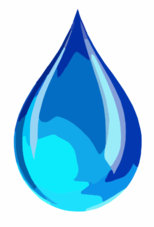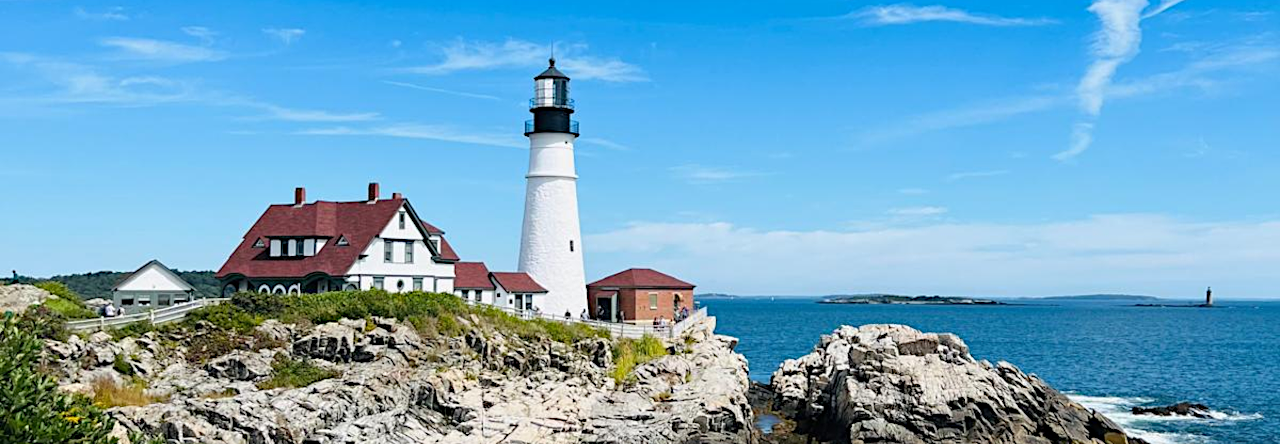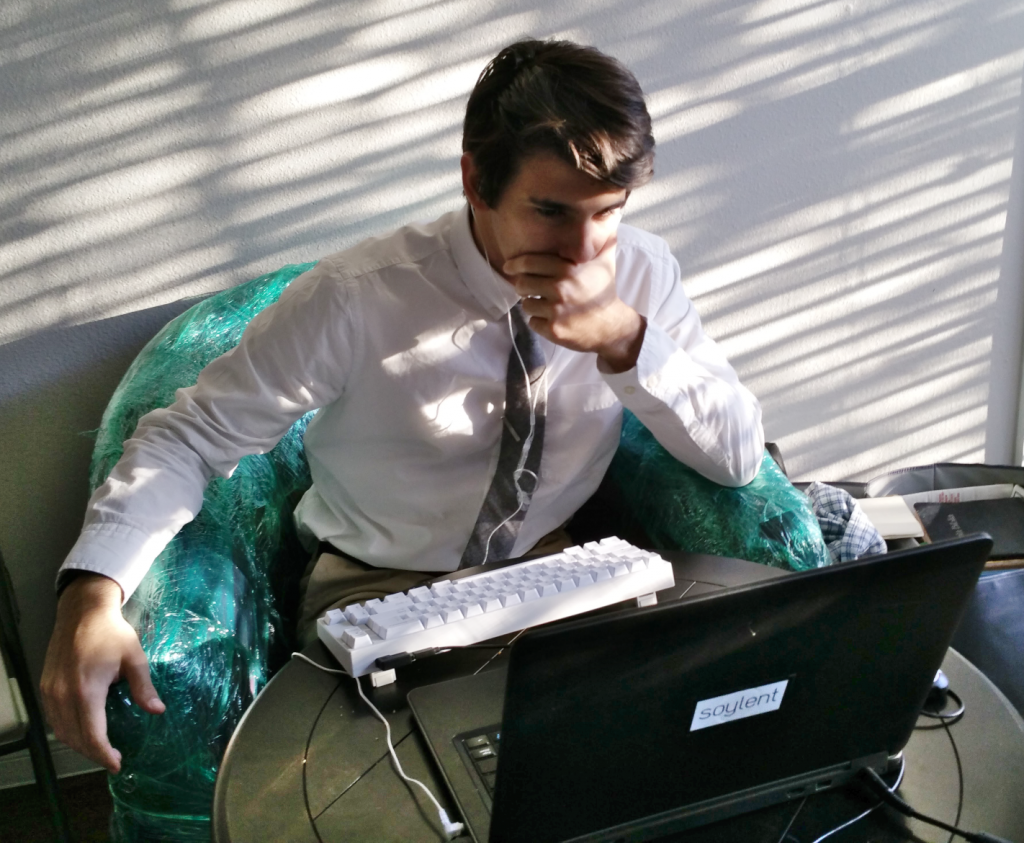Christian has gotten permission from his employer to help me in my work doing image processing algorithm development in bioscience (cell culture). He is doing very complicated signal processing work about which I know very little. The thing that is most amazing about working with him is that he is so structured in what he does. Without asking, he is preparing to document and deliver what we need at a level to which our little company is not accustomed. The thing that makes it even more complex and interesting is that it is a science project and we do not even know whether what we have asked him to do is possible so structured methods and documentation are essential. I am enjoying this very much.
Category: Science Page 1 of 4

The current incarnation of the GRIME2 (v0.4.0.0) ground-based camera water level measurement program was a port of much earlier code that was updated and pushed to GitHub on September 12, 2020. The earliest date I can find for the code that was ported was v0.1j.0 committed (to SVN) and released on July 30, 2009. My PhD adviser at University of Nebraska-Lincoln (UNL) and I had a fairly long impromptu meeting this afternoon about the direction we are taking with this software and work. I have decided I am going to disaffiliate from UNL (to a certain extent–never not going to love my experience there) and focus my efforts on research associated with the GaugeCam GRIME Lab. That, in some sense is a difference without a distinction. What is really needed right now that I can contribute is
- publication of research that has already been performed,
- extension of the GRIME2 software package to handle much smaller calibration targets,
- integration of GRIME2 functionality into GRIME-AI (Artificial Intelligence),
- use of GRIME-AI to answer interesting hydrology, ecology, and agricultural questions,
- and publications of those results in appropriate journals.
So, that is my current plan moving forward, as part of GaugeCam and the GRIME Lab. Part of the reason for that is so that we can investigate the possibility of developing a user base and commercializing GRIME-AI as an independent entity, unencumbered by the lumbering bureaucracy of an institution of higher learning. That is why I am pleased that we had the foresight to license GRIME2 with and Apache 2 license and solely in my name long before I stared working with ANY academic institution.

When I first started back to school at University of Nebraska, people talked about something called an h-index. It was almost universal that I got told two conflicting things about it. The first was that it was not a good measure of the quality of academic output and no one really puts much stock in it. The second was that, if a recently graduated PhD wanted to have a chance at getting a tenure track position, it was good to have an h-index of 10 or above. My future academic goals and age diminishes the importance of a high h-index even more. Still, it has been pretty cool to watch my h-index inch up. I have enough patents in process and technical articles in the pipeline that I have a decent chance of hitting at least 10, maybe even before I die!
This image of a fairly large snapping turtle was captured at the Kearney Outdoor Learning Center on Turkey Creek south of the Kearney, Nebraska High School by the water level measurement targets. The researchers at the site regularly wade around right there where the turtle is to clean and maintain the targets and equipment. It kind of makes me happy that I am not the one doing the wading and is giving pause to everyone else. The breadth of variety in the wildlife there at Turkey Creek is nothing short of amazing with owls, raccoons, herons, turtles and who knows what else.

Troy flew to Tuscaloosa, Alabama yesterday to attend a water conference. He will give a presentation on the work we do at the GRIME Lab. The main focus of the lab is to drive complexity of the use of ground-based imagery to answer hydrological questions. The above, fairly simple, graphic describes it well. The image on the left is pretty hard to set up and maintain, but reduce the complexity of the image processing task because of the vision targets in the image. The image on the right is way easier to set up because nothing has to be installed or maintained in front of the camera, but the processing is way harder because there are no physical references for real-world unit calibration or camera motion in the scene. We are going to be able to watch Troy’s presentation online this afternoon.
Still more good things are happening with our GRIME Lab research team at University of Nebraska. Troy sent me links to two articles that were published yesterday. The first is an UNL general interest news story about the goings on at the GRIME Lab, who works there, and what we are doing. John S. and I are mentioned in the article in addition to Troy and others. The second is an open access article (you can read it and download it for free) on evaluation of whether there is enough information in images of a river to predict stage (water level) and discharge (flow). The article, published in PLOS Water is titled is Stage and discharge prediction from documentary time-lapse imagery. I am the primary author, but Troy, Christian, John, and several others are co-authors. The graph below is one of the prediction vs. actual comparison graphs from the paper.

That is little spot at the edge on the sun at the edge of the moon is not a smudge on the lens, but literally a sunspot. My buddy John S. took that picture and sent it to me. Lorena and I spent a couple of hours just enjoying the whole event. We had seen a 95% eclipse when we lived in Washington state, but this was a whole different category of thing. The temperature dropped ten degrees and it got way, way darker than the 95% eclipse. I might be game to travel to see the one in Spain next year or the year after. The image below is what it looked like when the eclipse was at totality.

Christian was given one of the coolest challenge coins ever for some of the research he has accomplished in his job. He got one from his professor when he was getting his PhD, but this seems like a much bigger deal. They gave it to him after and invited talk he gave on that research. He is scheduled to give and even more important talk in a few months. It really is amazing to see him performing at this level.
Almost everywhere we put our GaugeCam cameras, raccoons show up. They are amazing little animals. They have been particularly prominent at the KOLA location in Kearney, Nebraska. They are totally fascinating–I get addicted to watching them.
I am working through the weekend to finish some algorithms for a demo one of our sales people needs to do on Monday. The purpose of the demo is to show that we can measure bacteria in images with sufficient precision and enough features (contour roughness, 3-D, inferences, shape analysis, texture analysis, etc.) to inform the customers about the things they want to know including differentiation of bacteria types, size, growth rates, etc. Honestly, I love doing this kind of task. It seems like when there are “hair-on-fire” moments, ideas seem to percolate a bit more than at other times. I think that might be because as the results from one algorithm are available, the knowledge derived from that can inspire new ideas.
We have a big demo coming up at my day job that has to do with the ability to measure different types of bacteria and one type of fungus in an time series of images. Of course, I have only gotten this one image so far, the whole time series is to follow soon, so the clock does not start ticking on the demo development until I have downloaded all the images. What that means is that I am almost certainly going to be working all weekend long, late into the night on these things. This probably should make me sad, but frankly, this stuff is really, really fun when one can get it to work and I am pretty much looking forward to the work–or at least the end product if I can get it right.

The one on the left is Tío Lauro’s etching titled El Científico. The one on the right is a picture of Christian that Lorena took from his apartment in Cambridge working from home for the day. Not only the likeness, but the character/posture/spirit/intensity is captured with amazing accuracy in the grabado.
The first “product” we developed when the GaugeCam project started back in 2009 at NCSU was called GRIM. That stood for GaugeCam Remote Image Manager. The name did not evoke a sense of positivity, so in the spirit of G.R.O.S.S. from Calvin and Hobbes (i.e. Get Rid Of Slimy GirlS), we added Educational and changed the software name to GRIME. A MUCH better name for people mucking around in the mud. Today, Troy sent me some of the accuracy research results for the project. We (and she) think it is Kelly’s handwriting, but we are really not sure. At the top of the page you can see GRIM VERSION: 0.1j. I looked at the appendix of my dissertation that holds the release notes for all the GRIME software I wrote and it says that it was released on July 30, 2009. It is cool that we have a record that shows we were doing the research from that far back.

Christian is scheduled to present the research from his work to at the 2023 Asilomar Conference on Signals, Systems, and Computers (ACSSC 2023) this morning. The title of his presentation is “Online Null Adaption on a Digital Controllable Reflectarray Receiver.” He has been working on this work for quite a while now, but it is finished and he has now moved on to something new. He took the seven hour flight (SEVEN HOURS!!!!) from Boston to San Francisco, then drove down to the conference center in time for the first plenary talk yesterday. Of course, he stopped by In-N-Out for an “animal style” hamburger on the drive down.
I have been working with a couple of guys in different capacities for close to forty years. The last twenty years or so, I have used them as consultants for difficult machine vision work. I never would have imagined when I first met them that we would still be working together so many years later. They are both exceptionally talented machine vision algorithm developers. When I talk about Frank I say that he is pretty much the Mozart in our field, and he is. In addition to machine vision and among other things, Frank is a truffle hunter. He and a friend wrote a book titled “Field Guide to North American Truffles.” Mark, in a very different way, is just as talented. He got his Ph.D. in Physics from a co-author of Albert Einstein, has an Erdos number of 3, and is indispensable when it comes to the math of image processing. The synergy created when they work together is with par in the little technical world in which we live. I am amazed they still love to do this at 75 plus years of age and even more amazed that I get to do it with them. They are part of the reason I am loathe to retire anytime soon. Even more importantly, I am glad to call him my friend.
I love this picture of Christian. This picture was taken when he was 20-years old and two years and change into his Ph.D. He had come to visit us when we were living in an apartment in Lewisville, Texas. During those years and even now, we see Christian in this mode. Thinking. It is hard to overstate the difficulty of the research program onto which he had embarked. The difficulty and importance of his work has accelerated since he received his appointment at MIT. His work is hard in ways that few people are equipped to understand. He is one of those few who are able to move between the development of difficult theoretical solutions to their implementation in mechanical and electrical hardware and the software that drives it all.
BIBLE: New Testament read #38 (New Living Translation) — Complete

Hemex Health has released their Sickle Cell Disease diagnostic product (PDF brochure here). It is a big deal because it is inexpensive and fast (10 minutes) compared to previous methods of diagnosis. This product will save lives through early diagnosis. I was fortunate to develop some of the enabling technology for this product, for a brief period as a volunteer and later on as a contractor. Congratulations Peter, Patty and the whole team for this successful product release!

Christian flew into Boston yesterday afternoon to look for apartments before he starts work at MIT next week. We went to California Pizza–the same place we went when we looked for an apartment in Tempe when he started his PhD at Arizona State University. After dinner, I gave him a tour of Thrive Bioscience where I work. He liked it a lot. The part he liked best was the instruments I showed him that we build. He designed one of the most important algorithms we use in the growing of stem cells. It was really nice for him to be able to see where his algorithm is being used. It is hard to overstate how import was his work in this development.
 Christian is getting toward the end of his PhD program at Arizona State University. His first, first-author, refereed journal article, A Decentralized Receiver in Gaussian Interference, was published in Entropy in April of 2018. Just over the last week or so, he served as a reviewer for an article in that same journal and is now on the list and will review more articles there. He has two more articles in process that will be submitted very soon that will form part of his dissertation. Hopefully, he will defend this thesis and be done sometime this summer or early fall. It has been a long, hard haul and his is looking forward to getting out of school and going to work.
Christian is getting toward the end of his PhD program at Arizona State University. His first, first-author, refereed journal article, A Decentralized Receiver in Gaussian Interference, was published in Entropy in April of 2018. Just over the last week or so, he served as a reviewer for an article in that same journal and is now on the list and will review more articles there. He has two more articles in process that will be submitted very soon that will form part of his dissertation. Hopefully, he will defend this thesis and be done sometime this summer or early fall. It has been a long, hard haul and his is looking forward to getting out of school and going to work.
 It has been a month or so since I have provided an update on the Retirement PhD/GaugeCam projects–they are kind of tied to each other. Everything is not complete (I think we are about halfway there), but everything that is complete has been up and running for over a month on two separate computers: 1) A Raspberry Pi and 2) a plain vanilla Ubuntu Server. The plan for over the holidays was to jump back in and see if I could get the project to the point where we could do a beta deployment, but that was not to happen–suffered a minor setback due to a cold. So, now I am talking to my buddy John H. down in Arizona (well, up actually, if we are talking altitude and not global direction). Hopefully, I can get him on the project, partially because he is a profoundly better embedded programmer than me and partially because it is a lot more fun to do this kind of thing with a friend. We are still on a long slow approach to entry into a PhD program, but it is still on track. We have added two new sets of functionality that will be required for the GaugeCam work and John will be perfect for that if he has time to do it.
It has been a month or so since I have provided an update on the Retirement PhD/GaugeCam projects–they are kind of tied to each other. Everything is not complete (I think we are about halfway there), but everything that is complete has been up and running for over a month on two separate computers: 1) A Raspberry Pi and 2) a plain vanilla Ubuntu Server. The plan for over the holidays was to jump back in and see if I could get the project to the point where we could do a beta deployment, but that was not to happen–suffered a minor setback due to a cold. So, now I am talking to my buddy John H. down in Arizona (well, up actually, if we are talking altitude and not global direction). Hopefully, I can get him on the project, partially because he is a profoundly better embedded programmer than me and partially because it is a lot more fun to do this kind of thing with a friend. We are still on a long slow approach to entry into a PhD program, but it is still on track. We have added two new sets of functionality that will be required for the GaugeCam work and John will be perfect for that if he has time to do it.













